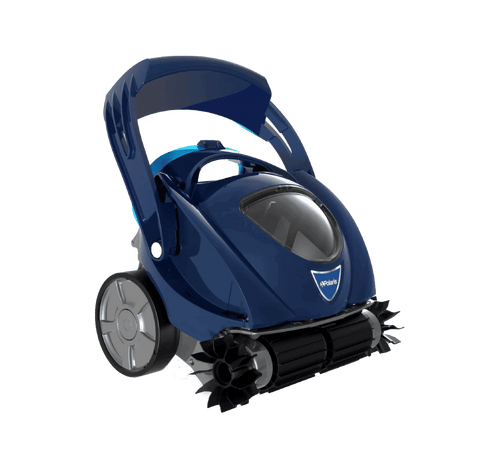Swimming pool covers are important for your pool in every season. In the summer, they help to keep leaves and debris out of the water and prevent evaporation. If you live in a temperate climate, like here in Canada, pool covers can also protect your pool during the winter season when it’s not in use. But which type of pool cover is best for your pool? Let’s look at the differences between the various types of covers.
Solar Pool Cover
Solar pool covers are a popular choice because they’re affordable and easy to install. With an appearance similar to translucent bubble wrap, these covers are designed to absorb the sun’s heat during the day, and continue to hold this heat when the outside temperature drops at night. In addition to being the only swimming pool cover that can increase water temperature, solar pool covers minimize evaporation, reducing the need to top up your pool water and adjust its chemical levels which, in turn, reduces your maintenance expenses.
To install a solar pool cover, you simply cut the cover to match the size of your pool using normal scissors, and then place the cover, bubble side down, in the water. Most pool owners also install a cover roller, which makes it significantly easier to take the cover on and off. The cover floats freely in your pool water, which means that it’s not 100% effective in keeping out debris. Likewise, these covers do not protect children or animals from falling into the water, which can be an important consideration for families concerned with pool safety. They’re designed to be used in the summer, so if you live in a climate with cold winters, you’ll need to invest in a second cover to use for winterizing your pool.
Winter Cover
Winter pool covers are made of heavy duty materials, designed to protect your swimming pool from cold temperatures during the winter season. They can be used all year, but they’re not easy to take on and off, and thus they’re generally only used when closing your pool for the winter. Like other types of covers, winter covers reduce evaporation and keep out debris, in addition to offering thermal protection against freezing and reducing sunlight, which helps to prevent the growth of algae. A winter cover is relatively light, which means it needs to be anchored around the perimeter of your pool, and, like a solar cover, a winter cover cannot hold weight, so it offers no protection for children and pets.
Safety Pool Covers
Safety pool covers are a good choice for many families because they can be used year-round, and they’re designed to support weight, which prevents people and animals from falling into the pool. There are two main types of safety pool covers: Solid and mesh.
Solid safety covers, which are made of a solid vinyl material, are very effective in protecting your pool from debris and sunlight; however, they do not allow water to pass through, so they typically contain a drain panel or require a pump in order to prevent precipitation from accumulating on top over the winter.
Mesh covers, on the other hand, keep leaves and debris out while also allowing rain and melting snow to seep through into the pool. The downside is that this outside water can make your pool quite dirty over the winter, but it also means that you don’t need to worry about accumulating water weighing the cover down, as you do with a solid cover.
Automatic Covers
Automatic covers are typically more expensive than the other cover types and require professional installation; however, they also offer a number of substantial benefits. These covers come in many different forms, many of which can be used year-round. They are all extremely easy to take on and off, opening and closing by pressing a button. Their more rigid design seals out debris and makes it impossible for anyone to fall in by mistake, plus these covers also reduce evaporation and keep the pool warm.
The downside is that the vinyl material these covers are usually made of tends to require replacement every 5 years, which can add up to expensive maintenance costs. In addition, automatic pool covers are sometimes so effective in heating the pool that some people find their pool water actually becomes too warm in the summer months.
So which one will it be?
Now that you understand the difference between each type, is it time to invest in a new pool cover? Visit one of International Pool and Spa’s locations across Ontario, or check out our line of swimming pool covers here.


